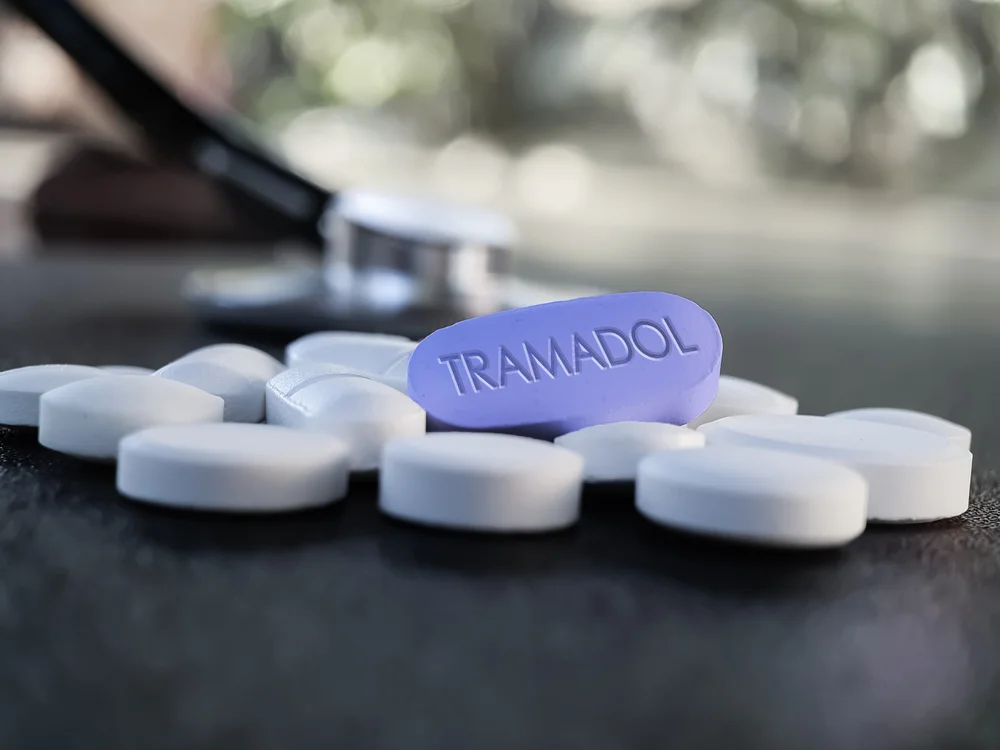Are you or a loved one grappling with Tramadol use? It’s a common scenario many face: a medication initially prescribed to manage pain quietly becomes a central part of daily life. Tramadol, known for its effectiveness in pain relief, can also lead down a path of dependency and addiction if not managed carefully.
In this blog, we’ll unpack everything you need to know about Tramadol—from understanding its medical uses to recognizing the signs of addiction. We’ll also dive into the side effects of its use, explore the available treatment options, and discuss strategies to prevent relapse. Whether you’re looking for information to support yourself or someone else, this guide will provide valuable insights to navigate the challenges of Tramadol addiction and find effective ways to reclaim wellness.
Contents
Understanding Tramadol and Its Uses
Tramadol is an opioid analgesic prescribed for moderate to moderately severe pain management. Unlike stronger opioids like morphine, Tramadol binds less intensely to the brain’s opioid receptors, making it less addictive but still effective for pain relief.
Classification and Mechanism:
- Dual Action: Tramadol not only acts on opioid receptors but also inhibits the reuptake of serotonin and norepinephrine, similar to antidepressants, enhancing pain relief.
Typical Uses:
- Versatile Pain Management: It is used for various types of pain, including post-surgical, arthritis, and chronic conditions.
Understanding Tramadol’s intended use and risks is crucial for anyone prescribed this medication, emphasizing the importance of careful usage and adherence to prescribed doses to prevent misuse.
Signs of Tramadol Addiction
Recognizing the signs of Tramadol addiction is essential for early intervention and effective treatment. Addiction can manifest through various behavioral and physical indicators that signal an unhealthy dependency on the medication. Here are some key signs to watch for:
Behavioral Signs:
- Increased dosage intake
- Preoccupation with obtaining the drug
- Withdrawal from social activities
- Failing to meet responsibilities at work, school, or home due to drug use.
- Visiting multiple doctors or pharmacies in an attempt to obtain additional prescriptions.
Physical Signs:
- Experiencing withdrawal symptoms such as anxiety, sweating, nausea, tremors, and confusion when not using the drug.
- Noticeable neglect of personal hygiene and grooming.
- Frequent drowsiness, changes in sleep patterns, or slurred speech, which are indicative of excessive use.
- MUnpredictable emotional responses or mood swings, often influenced by drug intake or withdrawal periods.
These signs, particularly when observed together, can indicate a developing addiction to Tramadol. It is important for friends, family, or colleagues to recognize these signs and encourage seeking professional help.
Side Effects of Tramadol Use

Tramadol is generally effective for pain management, but it can also cause a range of side effects that vary from mild to severe. Here are the common and potentially dangerous side effects associated with Tramadol use:
Common Side Effects:
- Nausea and Vomiting
- Dizziness and Drowsiness
- Headaches
- Constipation
- Dry Mouth
Potentially Dangerous Side Effects:
- Seizures
- Serotonin Syndrome
- Increased Risk of Dependency
- Respiratory Depression
- Hypoglycemia
Monitoring for these side effects is important, and any new or worsening symptoms should be reported to a healthcare provider immediately. Adjustments to the medication regimen may be necessary to mitigate these effects and ensure safe use of Tramadol.
Treatment Options for Tramadol Addiction

Treating Tramadol addiction effectively requires a comprehensive approach that addresses both the physical dependency and the psychological factors contributing to the addiction. Here are the key treatment options available for individuals struggling with Tramadol addiction:
Detoxification
- Medically Supervised Detox: The first step in recovery often involves a medically supervised detox process to safely manage withdrawal symptoms. Healthcare professionals monitor the patient’s condition and may administer medications to alleviate discomfort and stabilize the patient during detox.
Medication-Assisted Treatment (MAT)
- Pharmacotherapy: Certain medications may be prescribed to help reduce cravings and withdrawal symptoms associated with Tramadol dependency. These can include drugs like methadone, buprenorphine, or naltrexone, which help regulate brain chemistry and ease the transition to sobriety.
- Continuous Medical Monitoring: Regular follow-ups with healthcare providers ensure that the treatment plan remains effective and that adjustments are made as necessary.
Behavioral Therapies
- Cognitive Behavioral Therapy (CBT): CBT is a popular and effective treatment modality that helps individuals understand the thoughts and behaviors that lead to substance abuse. It provides strategies for coping with cravings and avoiding triggers that could lead to relapse.
- Motivational Interviewing (MI): This technique enhances an individual’s motivation toward recovery by addressing ambivalence and encouraging positive behavioral change.
- Family Therapy: Involving family members in the treatment process can improve recovery outcomes by addressing family dynamics that contribute to addiction and providing support during the recovery process.
Support Groups
- Peer Support: Programs like Narcotics Anonymous (NA) or other community support groups offer ongoing encouragement and a platform for sharing experiences with others who have faced similar challenges.
- Aftercare Support: Ongoing support and counseling continue after initial treatment phases, helping to prevent relapse and sustain recovery over the long term.
Holistic Approaches
- Lifestyle Changes: Incorporating healthy habits such as exercise, proper nutrition, and adequate sleep can significantly support physical health and enhance overall well-being during recovery.
- Mindfulness and Relaxation Techniques: Practices such as meditation, yoga, and mindfulness can reduce stress and improve mental clarity, both of which are important for maintaining sobriety.
These treatment options, when combined and tailored to the individual’s specific needs, offer the best chance for overcoming Tramadol addiction and returning to a healthy, drug-free life. Engaging in a treatment program that integrates these approaches ensures a comprehensive treatment strategy that addresses all facets of addiction.
Preventing Tramadol Relapse
Successfully managing recovery and preventing a relapse into Tramadol use involves a combination of strategies. Here are some direct measures that can support sustained sobriety:
- Continue regular counseling sessions, including individual therapy and support groups, to reinforce coping skills.
- Use medications as prescribed to manage cravings and withdrawal symptoms post-detox.
- Maintain connections with supportive friends, family, and recovery groups.
- Engage in regular physical activity, maintain a nutritious diet, and ensure adequate sleep.
- Incorporate stress reduction practices such as yoga, meditation, or deep breathing exercises.
- Fill free time with engaging and fulfilling activities to reduce idleness and potential triggers.
- Stay away from environments or social settings that may tempt drug use.
Implementing these strategies can significantly reduce the risk of relapse and support a long-term recovery from Tramadol addiction.
Conclusion
Overcoming addiction, including dependency on medications like Tramadol, is a journey that requires not just strength and determination but also the right support and resources. Recognizing the need for help and taking the first step towards recovery are pivotal in this process.
At QuitMantra, we are committed to providing you with comprehensive support and effective treatment options tailored to your specific needs. Whether you’re battling Tramadol addiction or any other substance use disorder, our team of experts is here to guide you through each step of recovery.
Book your trial therapy session or join our deaddiction program today, and start your journey towards a healthier, drug-free life. Let QuitMantra be your partner in this transformative process.
